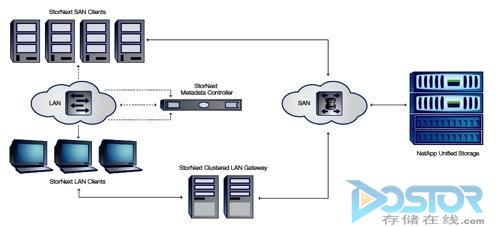DoSTOR September 2, 2008–Daqing Oilfield Exploration&Production Institute was established in 1964. Its Geophysics Service Center (GSC) has nearly 1000 servers. As the data increasing, traditional NFS server could not meet the processing requirement. And performance problems emerged when I/O server exporting file systems from multi I/O node.
Quantum StorNext software solved those problems. Its SAN file system topology configuration can take advantage of StorNext file system, StorNext Storage Manager archiving system and Quantum Scalar i2000. Especially in the processing of 3D seismic pre-stack time/depth migration, the share file system fully meet the requirement of processing large scale of 3D seismic data jointing.
By implementing StorNext solution, GSC constructed a large GRISYS including 698 servers (1,444 CPU), 10Gb network, 576 Ethernet port, 400TB FC disk array and a 600TB Quantum Scalar i2000 tape library. All the servers are running StorNext file system software. Thus every server can access the sharing FC disks directly with a spped of 100MBps.
The seismic processing clusters of Daqing Oilfield Exploration&Production Institute have installed five sets of seismic data processing software. Because of the load-balancing issues, it is hard to achieve application sharing for the traditional shared file system. The StorNext solution eliminated the performance constraints by providing load balance. With this feature, all I/O nodes can visit the same file system without delay, no queue. As a result, the institute can deploy I/O nodes according to exploration and development needs. Thereby enhance the efficiency of seismic data processing.
Zhang Tiegang , general engineer of reconnoiter & exploitation graduate, Daqing oil field corporation, said that the StorNext solution solved performance bottleneck of their tile system and improve the efficiency of processing seismic data.




